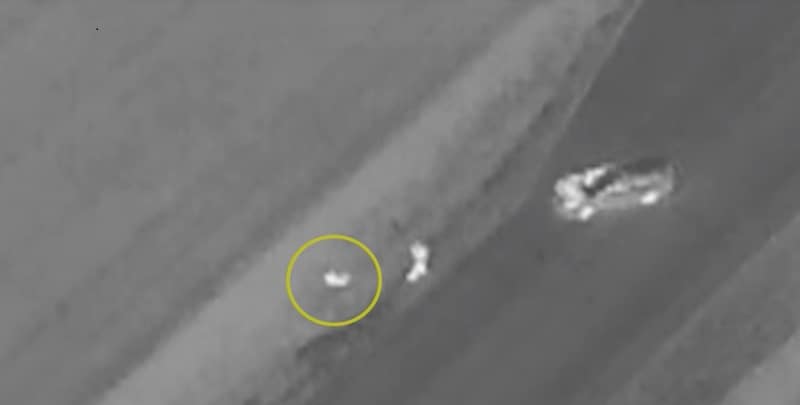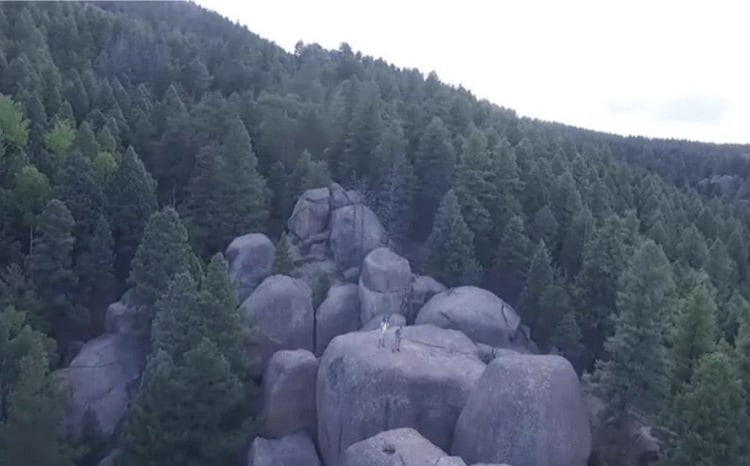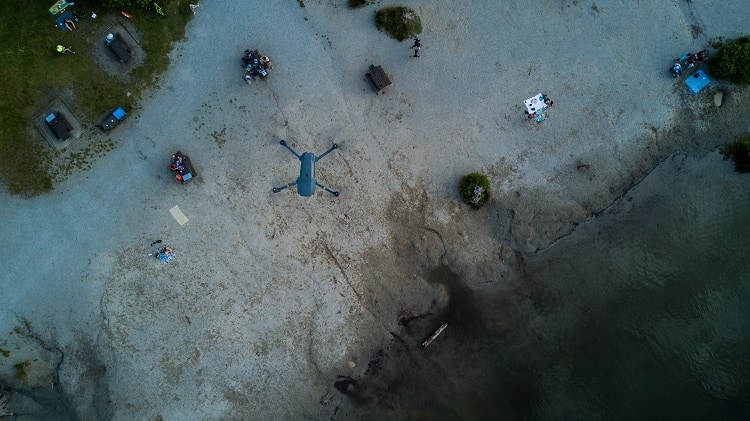65 Lives Saved by Drone: New DJI Report Highlights Emerging Trends In Drone Rescue Operations
BY Zacc Dukowitz
9 May 2018DJI recently released a report highlighting the 65 people who were saved by drones from May 2017 to April 2018, at least 22 of whom were in mortal danger.
The new report, “More Lives Saved: A Year of Drone Rescues Around the World,” explores new trends and draws unique conclusions about how drones are being utilized in search and rescue missions as well as resource deliveries—like this beef jerky and cookies delivery—across the globe.

A police officer in the UK comes to the aid of an unconscious man in a ditch
The report largely attributes the upsurge of drone use in public safety missions to three factors: the rapid development and innovation of drone technology, the expansion of drone usage by first responders, and increasingly thorough aviation regulations.
One thing to note: because the list was compiled from mainly English-language news reports, the total count of 65 people is likely less than the true count of drone rescues from around the world. Nevertheless, we can still see a few trends emerging from this report in terms of how drones are being used for good.
The First Trend: Improvements in Drone Technology
Thermal imaging cameras, augmented-reality overlays, and real-time image analysis have all been developed specifically for use by first-responders, and other technological innovations created for public use have been similarly adopted.
Thermal imaging cameras attached to UAVs helped save at least 15 of the 65 people highlighted in the report. The victims, who were hidden from view by either darkness or other obstacles, were located only when drones were introduced into the rescue operation.
The report details an incident in North Carolina in which an 11 year old girl went missing. It turned out that she had fallen asleep under leaves in a thicket on a 30-degree night.
As reported by local media, “It was so dark in the woods that even with flashlights, deputies walked right past the child and had to be redirected back to her by the drone pilot.”
The Second Trend: Rapid Adoption by First Responders
The rescues outlined in DJI’s report occured over 27 separate incidents.
Many public agencies use their drones over a period of months before they are credited with a drone-aided rescue operation. These agencies have made the deployment of drones standard operating procedure, increasing the likelihood that they will be able to locate a missing person or protect lives and property.
Check out this photo of two lost hikers waving to the drone that found them on a Colorado mountainside:

Image courtesy of Douglas County Search and Rescue
Not only that, but paramedics, police, and fire departments are also utilizing drones to assess safety risks for their own personnel.
In Ontario, Canada last winter, paramedics discovered that a snowmobiler had vanished under the ice of a frozen lake during a snowstorm. After using their drone to determine that the victim had fallen in over a kilometer offshore, the rescue mission became instead a recovery mission.
I strongly believe we prevented further injury or death of a first responder.
– Michael Nolen, Renfrew County Chief Paramedic
The Third Trend: Smart Aviation Regulations
Roughly half of the 65 people saved (32, to be exact) were from the United States.
While this fact could reflect a bias in English-language news reports (which provided the the majority of the information used in creating the report), it very well might reflect the value of the FAA’s Part 107 drone rules issued in August of 2016. According to the report, the Part 107 regulations “gave drone pilots a clear, reasonable path to be certified to fly drones for professional purposes, and has greatly increased the number of public safety agencies using drones.”
However, there is still a ways to go to make these rules work for first responders.
Part 107 pilots are restricted from flying at night, over people, and beyond visual line of sight (BVLOS). While a sizable number of waivers have been granted in these areas, DJI’s report reminds us: “Drones cannot be used widely for lifesaving work unless laws and regulations allow and encourage it.”



